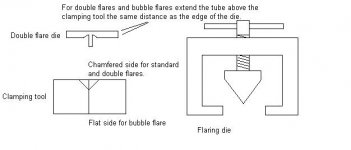jaegzie
Jedi Hopeful
Offline
I bought a brake flaring tool from harbor Freight and when ever I flare the end of a brake line I end up cracking it. Is there something I need to do to prevent this that maybe I am not doing or maybe I am doing it wrong.
Basically what I do is put the line in the clamp put the bit in the clamp and tighten so it forms. everytime I have done this it cracks the line.
Basically what I do is put the line in the clamp put the bit in the clamp and tighten so it forms. everytime I have done this it cracks the line.

 Hi Guest!
Hi Guest!

 smilie in place of the real @
smilie in place of the real @
 Pretty Please - add it to our Events forum(s) and add to the calendar! >>
Pretty Please - add it to our Events forum(s) and add to the calendar! >> 


